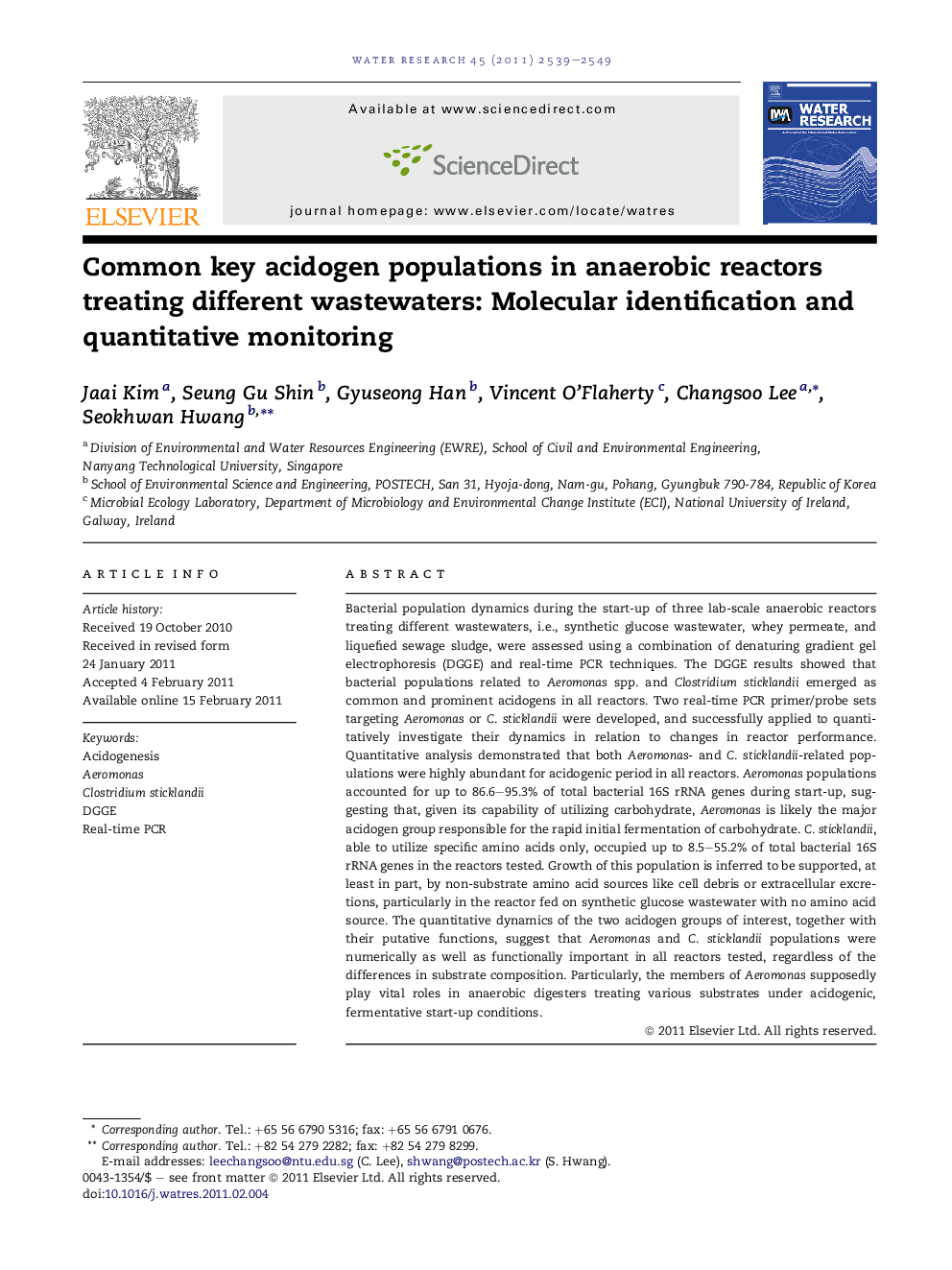| کد مقاله | کد نشریه | سال انتشار | مقاله انگلیسی | نسخه تمام متن |
|---|---|---|---|---|
| 4483578 | 1316892 | 2011 | 11 صفحه PDF | دانلود رایگان |

Bacterial population dynamics during the start-up of three lab-scale anaerobic reactors treating different wastewaters, i.e., synthetic glucose wastewater, whey permeate, and liquefied sewage sludge, were assessed using a combination of denaturing gradient gel electrophoresis (DGGE) and real-time PCR techniques. The DGGE results showed that bacterial populations related to Aeromonas spp. and Clostridium sticklandii emerged as common and prominent acidogens in all reactors. Two real-time PCR primer/probe sets targeting Aeromonas or C. sticklandii were developed, and successfully applied to quantitatively investigate their dynamics in relation to changes in reactor performance. Quantitative analysis demonstrated that both Aeromonas- and C. sticklandii-related populations were highly abundant for acidogenic period in all reactors. Aeromonas populations accounted for up to 86.6–95.3% of total bacterial 16S rRNA genes during start-up, suggesting that, given its capability of utilizing carbohydrate, Aeromonas is likely the major acidogen group responsible for the rapid initial fermentation of carbohydrate. C. sticklandii, able to utilize specific amino acids only, occupied up to 8.5–55.2% of total bacterial 16S rRNA genes in the reactors tested. Growth of this population is inferred to be supported, at least in part, by non-substrate amino acid sources like cell debris or extracellular excretions, particularly in the reactor fed on synthetic glucose wastewater with no amino acid source. The quantitative dynamics of the two acidogen groups of interest, together with their putative functions, suggest that Aeromonas and C. sticklandii populations were numerically as well as functionally important in all reactors tested, regardless of the differences in substrate composition. Particularly, the members of Aeromonas supposedly play vital roles in anaerobic digesters treating various substrates under acidogenic, fermentative start-up conditions.
► Aeromonas was the most dominant acidogen group in three different anaerobic digesters.
► Aeromonas and C. sticklandii were the key acidogens commonly abundant in all digesters tested.
► Aeromonas is likely responsible for the rapid fermentation of carbohydrate during start-up.
► Real-time PCR primer/probe sets for Aeromonas and C. sticklandii were newly developed.
► Aeromonas and C. sticklandii might be major acidogens also in other anaerobic digesters.
Journal: Water Research - Volume 45, Issue 8, April 2011, Pages 2539–2549